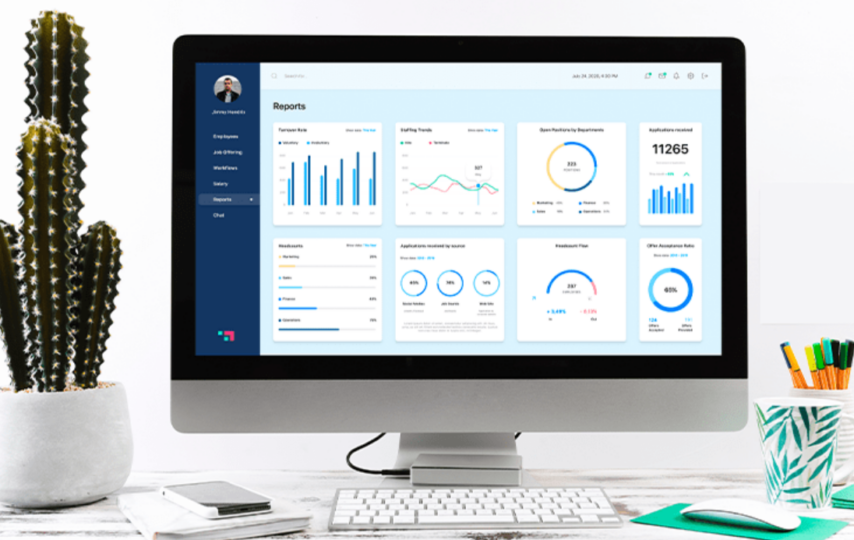In today’s hyper-competitive business world, talent recruitment is an arduous process. Once we succeed, the subsequent journey, onboarding, is equally significant. The first few days and weeks in a new job are momentous for new hires, shaping their overall experience and impression of the organization. Thus, an effective onboarding process is pivotal to accommodating new employees and empowering them, increasing their productivity, job satisfaction, and long-term commitment.
However, the traditional onboarding process can be marred by operational inefficiencies, ineffective communication, and a lack of personalization, leading to a less-than-optimal experience for the new employee. This is where an Employee Onboarding Platform (EOP) comes into play. An EOP can streamline the onboarding process, ensuring a seamless transition for new hires. But why exactly do you need an EOP, and how does it impact the employee journey and your organization’s success? Let’s delve into it.
Reducing Operational Inefficiencies
The traditional onboarding process involves a plethora of paperwork, numerous processes, and significant manual labor, making it time-consuming and error-prone. An EOP automates most of these tasks, significantly reducing the burden on HR and freeing them to focus on creating a more personalized and human experience for the new hires.
Furthermore, with EOPs, essential documents such as the employee handbook, company policies, or job-specific resources can be easily shared, accessed, and updated. Digital signatures can be captured swiftly, accelerating processes like employment contract signing. This convenience of a paperless onboarding process, devoid of bureaucratic red tape, aids in creating a positive first impression for the new hire.
Effective Communication and Information Dissemination
Without an organized system, communication with new hires can become fragmented, leading to misinformation or gaps in understanding. An EOP acts as a centralized hub for communication, ensuring that the right information reaches the new hire at the right time.
Moreover, the EOP can allow new hires to understand the organizational structure, roles of their colleagues, and lines of communication even before they start. It can also be used to schedule introductory meetings, ensuring that new hires feel integrated into the team from day one.
Personalization and Engagement
Every new hire is unique, with different needs and expectations. Traditional onboarding often fails to cater to this individuality. With an EOP, onboarding can be customized according to the new hire’s role, department, or even individual preferences.
EOPs can include interactive content like videos, quizzes, and virtual tours, making the onboarding process engaging and enjoyable. They can also track the new hire’s progress during onboarding, providing insights to adjust and optimize the process further.
Compliance and Record Keeping
In many industries, organizations are required to comply with certain regulations related to the onboarding process. Non-compliance can result in legal complications and financial liabilities. EOPs simplify compliance by providing templates for mandatory forms, automatic deadline reminders, and comprehensive record-keeping mechanisms.
Metrics and Continuous Improvement
One of the most significant advantages of EOPs is the ability to track and analyze data related to the onboarding process. From the onboarding process’s duration to the new hires’ engagement level, numerous metrics can be monitored. These insights can be invaluable in identifying bottlenecks, evaluating the effectiveness of the onboarding process, and driving continuous improvements.
Cultural Assimilation
An EOP can play a crucial role in assimilating new hires into the company culture. By sharing the company’s mission, values, and culture through engaging digital content, an EOP can help new hires feel connected to the organization’s ethos. This can foster a sense of belonging and commitment from the onset, positively influencing long-term retention.
In conclusion, an Employee Onboarding Platform can revolutionize the way organizations welcome new hires. It reduces operational inefficiencies, ensures effective communication, provides a personalized and engaging experience, simplifies compliance, enables continuous improvement, and aids cultural assimilation. With these advantages, an EOP can significantly enhance the overall employee experience, driving productivity, job satisfaction, and, ultimately, the success of your organization.
As organizations around the world strive to adapt to the changing dynamics of the workforce, an EOP is no longer a luxury; it’s a necessity. It’s an investment that promises significant returns, making the seamless transition of new hires from being candidates to becoming contributors to the organization’s growth journey. So, don’t let your organization be left behind. Embrace an Employee Onboarding Platform and set your new hires—and your organization—up for success.








